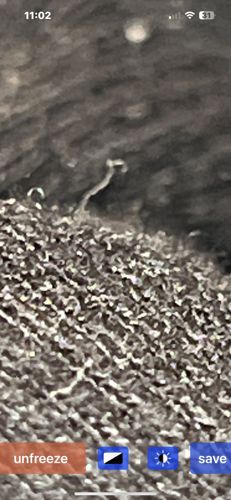Fungus Gnat Larva
Scientific Name: Sciaridae (many genera and species)
Order & Family: Order: Diptera, Family: Sciaridae
Size: Larvae can range from 1 to 10 mm in length.

Natural Habitat
Damp, organic-rich environments, often in potting soil of houseplants, greenhouses, and compost piles.
Diet & Feeding
Mainly feed on fungi, decaying organic matter, and plant roots. Some species can cause damage to seedlings and young plant roots.
Behavior Patterns
Fungus gnat larvae are typically found burrowing in the soil. They are legless and worm-like with a distinct black head capsule. They are most active in moist conditions and develop through several instars before pupating in the soil. Adults are short-lived, small, dark, mosquito-like flies often seen flying around plants.
Risks & Benefits
Risks: Can damage plant roots, especially in young plants and seedlings, leading to wilting, stunted growth, and increased susceptibility to other diseases. They can also be a nuisance indoors. Benefits: Contribute to decomposition of organic matter, and adults can serve as food for other insects.
Identified on: 9/17/2025